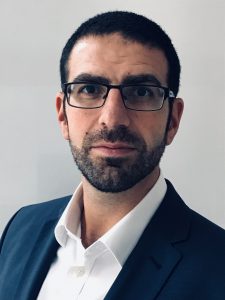A nasendoscopy is a diagnostic procedure that involves the examination of the nasal tube, throat, and larynx (voice box). It collects comprehensive photos or films of the structures using an endoscope, a specialised telescopic instrument that is guided through the nasal channel until the bottom of the throat.
An endoscope is made up of a lot of small pieces that work together to enable visual imaging of inside organs. The tube, which can be flexible or stiff, gives the device and its components support and structure. To give illumination, its end is frequently fitted with an optical fibre light system. The built-in lens, on the other hand, is in charge of acquiring and sending images of the interior body structures to a monitor.
Why is a Nasendoscopy Performed?
Nasendoscopy is used to inspect the nasal passages and better understand the condition so that effective treatment can be devised. Common conditions that are investigated through the use of nasendoscopy include:
- Nasal polyps which are abnormal growths that form inside the nose and sinuses and are often due to asthma or allergic reactions.
- Chronic sinusitis. For this conditions, nasoendoscopy is used to examine the nasal passages in order to better understand it and construct effective treatment.
- Recurrent nosebleeds.
- Dysphagia, or trouble swallowing, can be caused by oesophageal growths, oesophageal stricture, or a muscle dysfunction in the affected area.
- Dysphonia is a disorder in which the production of vocal sounds is disrupted, resulting in a harsh, rough, and highly breathy phonation. This is due to the vocal box’s inability to vibrate properly during exhale.
- For suspected cancer of the nose, throat or larynx, nasendoscopy can help determine any abnormal growth along the linings of the nasal passage as well as harvest several tissue samples for biopsy.
Is a Nasendoscopy Painful?
One of the most common questions asked is whether a nasendoscopy will cause any pain. Although the operation is mostly diagnostic, the presence of growths such nasal polyps could make it uncomfortable, though discomfort is rare or painful. The test necessitates the insertion of a tube down your throat, which will feel uncomfortable, but the doctor will usually apply a numbing drug for the nasal canal, which will alleviate the majority of the discomfort.
How is it Performed?
Patients are often given a nasal decongestant and, if necessary, local anaesthetic before the procedure. They are required to remain seated during the surgery to allow for easy head manipulation.
The endoscope is guided into the nasopharynx after being placed into the nasal cavity. As the scope moves across the body, the doctor will take note of the surrounding structures, looking for any abnormalities. After thoroughly inspecting the nasopharynx, the endoscope is guided between the middle and inferior turbinates to take images of these structures and their surroundings. The doctor may ask the patient to turn their head for the third pass so that the olfactory cleft can be easily assessed. For greater visualisation, a different type of endoscope could be employed. The patient may be asked to talk, swallow, puff their cheeks, or extend out the tongue as the endoscope is manipulated inside the nasal cavity.
Following Your Procedure
Once the nasendoscopy has been performed, the local anaesthetic will last for a while, after which you may begin to feel tingling as your feeling returns. It is recommended that you avoid eating and drinking during this period. You should be fine to drive following your procedure.
A nasendoscopy is usually a standalone procedure, but you may be called back for a follow-up appointment with your doctor if your symptoms have not improved.
Side-Effects of a Nasendoscopy
There are very rarely any side-effects from this procedure, although you may feel a bit of discomfort the following day.
Some patients experience an adverse reaction to the local anaesthetic which can cause difficulty in breathing. There may also be soreness in the throat which is common but usually resolves within a few days. You may also experience a bloody nose, but this is rare and is not indicative of a more serious problem.





 One Ashford
One Ashford One Hatfield
One Hatfield